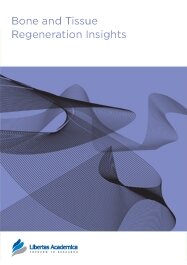

Publication Date: 03 Sep 2009
Type: Review
Journal: Bone and Tissue Regeneration Insights
Citation: Bone and Tissue Regeneration Insights 2009:2 13-23

The anterior cruciate ligament (ACL) is one of five ligaments in the knee that are important for stability and kinematics. It is also the most commonly injured ligament of the knee and due to its poor healing potential, severe damage warrants surgical intervention including complete replacement. Ligaments are longitudinally arranged, complex tissues; the mechanical properties of ligaments are a direct result of their components and the arrangement of these components in the tissue. It is these mechanics that have made ligaments so difficult to replace. Past ACL replacements have had many limitations that prevented their extensive use. These limitations range from mechanical fatigue over time to fraying of the device after implantation. In light of these problems, investigators have begun to pursue a host of new techniques to create a range of viable options for the repair, replacement, and/or regeneration of the ACL. These options include tissue engineered scaffolds with novel designs and specially treated transplanted tissues. In this article, the composition, arrangement, and mechanics of the ACL will be discussed in order to elucidate important aspects of ACL repair; past replacements will also be discussed. Afterwards, novel replacement options that look to solve problems faced by older replacement options will be presented. These devices use a wide variety of materials and designs to replicate ligament mechanics and allow for new tissue regeneration.
PDF (3.79 MB PDF FORMAT)
RIS citation (ENDNOTE, REFERENCE MANAGER, PROCITE, REFWORKS)
BibTex citation (BIBDESK, LATEX)

The editors were extremely helpful and prompt in responding to questions and issues related to the submission. The online submission was easy and quick. The whole process from submission to publication was very satisfying and expeditious.
Facebook Google+ Twitter
Pinterest Tumblr YouTube